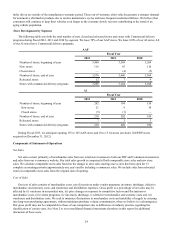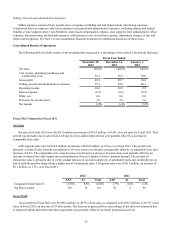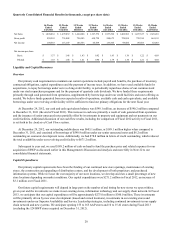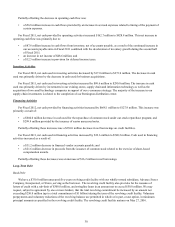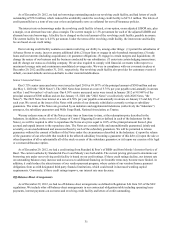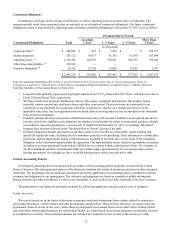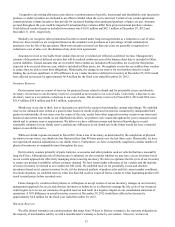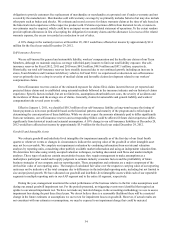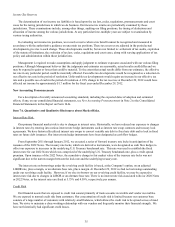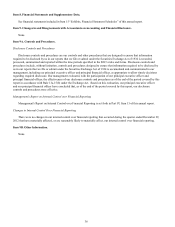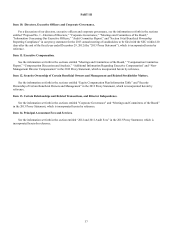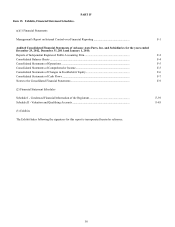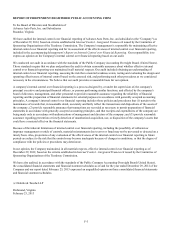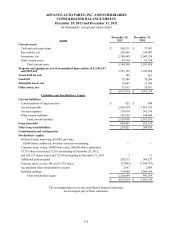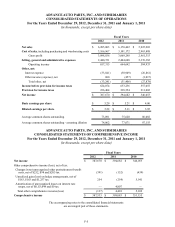Advance Auto Parts 2012 Annual Report Download - page 41
Download and view the complete annual report
Please find page 41 of the 2012 Advance Auto Parts annual report below. You can navigate through the pages in the report by either clicking on the pages listed below, or by using the keyword search tool below to find specific information within the annual report.34
obligation to provide customers free replacement of merchandise or merchandise at a prorated cost if under a warranty and not
covered by the manufacturer. Merchandise sold with warranty coverage by us primarily includes batteries but may also include
other parts such as brakes and shocks. We estimate and record a reserve for future warranty claims at the time of sale based on
the historical return experience of the respective product sold. If claims experience differs from historical levels, revisions in
our estimates may be required, which could have an impact on our consolidated statement of operations. To the extent vendors
provide upfront allowances in lieu of accepting the obligation for warranty claims and the allowance is in excess of the related
warranty expense, the excess is recorded as a reduction to cost of sales.
A 10% change in the warranty reserves at December 29, 2012 would have affected net income by approximately $2.4
million for the fiscal year ended December 29, 2012.
Self-Insurance Reserves
We are self-insured for general and automobile liability, workers' compensation and the health care claims of our Team
Members, although we maintain stop-loss coverage with third-party insurers to limit our total liability exposure. Our self-
insurance reserves for Fiscal 2012, 2011 and 2010 were $94.5 million, $98.9 million and $97.1 million, respectively.
Historically, our total self-insurance reserves have steadily increased due to our continued growth, including an increase in
stores, Team Members and Commercial delivery vehicles. In Fiscal 2012, we experienced a reduction in our self-insurance
reserves primarily due to a drop in severity of medical claims and favorable claims development related to our workers'
compensation claims.
Our self-insurance reserves consist of the estimated exposure for claims filed, claims incurred but not yet reported and
projected future claims and is established using actuarial methods followed in the insurance industry and our historical claims
experience. Specific factors include, but are not limited to, assumptions about health care costs, the severity of accidents and
the incidence of illness and the average size of claims. Generally, claims for automobile and general liability and workers'
compensation take several years to settle.
Effective January 1, 2011, we classified $50.3 million of our self-insurance liability as long-term because the timing of
future payments is now more predictable based on the historical patterns and maturity of the program and is relied upon in
determining the current portion of these liabilities. While we do not expect the amounts ultimately paid to differ significantly
from our estimates, our self-insurance reserves and corresponding SG&A could be affected if future claim experience differs
significantly from historical trends and actuarial assumptions. A 10% change in our self-insurance liabilities at December 29,
2012 would have affected net income by approximately $5.9 million for the fiscal year ended December 29, 2012.
Goodwill and Intangible Assets
We evaluate goodwill and indefinite-lived intangibles for impairment annually as of the first day of our fiscal fourth
quarter or whenever events or changes in circumstances indicate the carrying value of the goodwill or other intangible asset
may not be recoverable. We complete our impairment evaluation by combining information from our internal valuation
analyses by reporting units, considering other publicly available market information and using an independent valuation firm.
We determine fair value using widely accepted valuation techniques, including discounted cash flows and market multiple
analyses. These types of analyses contain uncertainties because they require management to make assumptions as a
marketplace participant would and to apply judgment to estimate industry economic factors and the profitability of future
business strategies of our company and our reporting units. These assumptions and estimates are a major component of the
derived fair value of our reporting units. The margin of calculated fair value over the respective carrying value of our reporting
units may not be indicative of the total company due to differences in the individual reporting units, including but not limited to
size and projected growth. We have allocated our goodwill and indefinite-lived intangible assets within each of our reportable
segments to multiple reporting units in our AAP segment and to the entire AI segment, respectively.
During the year, management monitored the actual performance of the business relative to the fair value assumptions used
during our annual goodwill impairment test. For the periods presented, no triggering events were identified that required an
update to our annual impairment test. We have not made any material changes in the accounting methodology we use to assess
impairment loss during the past three fiscal years. We do not believe there is a reasonable likelihood there will be a material
change in the future estimates or assumptions we use to test for impairment losses on goodwill. However, if actual results are
not consistent with our estimates or assumptions, we may be exposed to an impairment charge that could be material.


